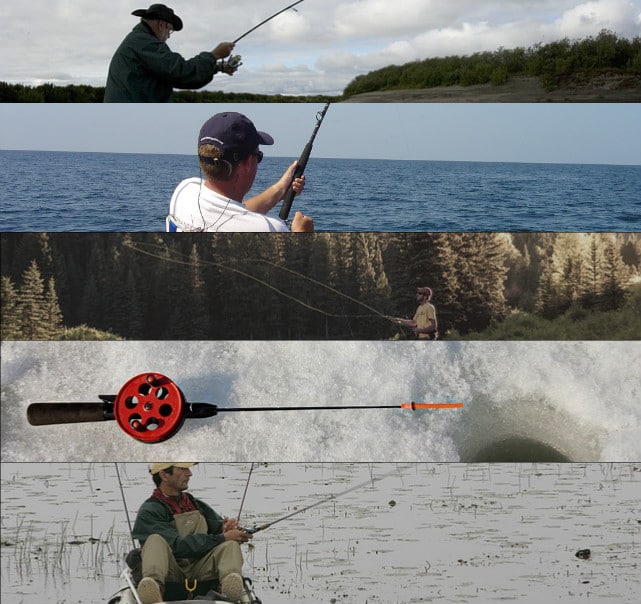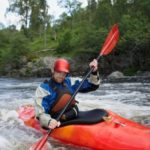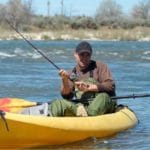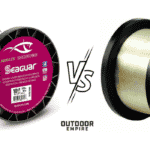While your grandfather may have gone fishing with little more than a length of bamboo, some twine and a hook, modern anglers have a variety of helpful equipment at their disposal.
From carbon-fiber rods to space age electronics, these items can help you catch more fish and have more fun in the process. However, you have to use the right type of equipment for the circumstances and your target species to maximize their value.
Different Types of Fishing
At the outset, you must decide how you intend to fish. Do you plan on sitting on a tree stump, hauling catfish out of a small pond with a cane pole? Or would you rather fly fish for trout on a peaceful Montana stream? Do you intend to cut through 2-feet of ice and target pike and yellow perch? Or maybe bowfishing is your choice?
In each case, you’ll need the right type of equipment to have good results and put fish in your bucket.
Conventional (Freshwater) Angling
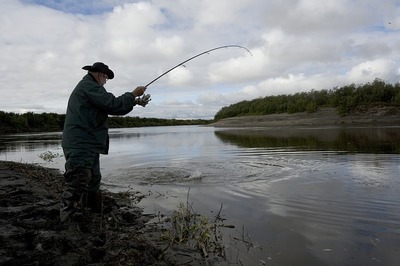
Add a few weights, hooks and floats if you want to use live bait, and be sure to bring a basic set of fishing tools.
To learn more about freshwater fishing in USA, follow Freshwater Phil.
International anglers can check out Fishing in Croatia for fly and spin fishing catches: fishingincroatia.blogspot.com
Saltwater Angling
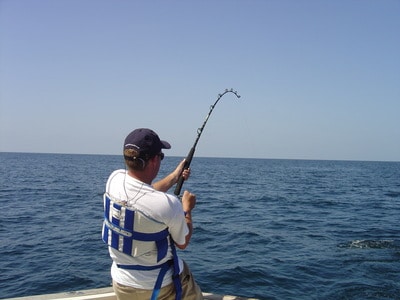
So you’ll need heavier line (12- to 25-pound-test will work for most recreational applications). You’ll also need lures, hooks, floats and sinkers that are typically larger than those used for catching bass or trout.
Although the ocean can be intimidating, if you choose the right location it can be both rewarding and memorable bonding experience for the whole family!
One popular and cheap place to go saltwater fishing is Asia. Why not to explore some of the best fishing spots in Lombok, Indonesia and capture large schools of fish feed and breed such as Spanish mackerel, Marlin, Sailfish, Tuna, Wahoo, Mahi Mahi, around the unspoiled reefs?
It’s the prime location for fishing, with drop off only a couple of kilometers from the beach.
For an easier and less costly ocean fishing experience you can try your hand at surf fishing. This is done on both the East and West Coasts of the US and the basic gear doesn’t have to be too expensive.
Fly Fishing
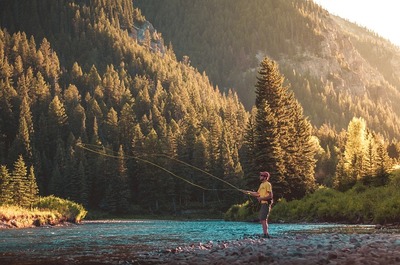
Fly fishing relies on completely different equipment and techniques than conventional fishing approaches do. Although fly rods are used by many anglers targeting saltwater fish, they are commonly used for catching stream-dwelling trout.
You’ll need the same basic equipment as you would for any other type of fishing – fly rod , fly reel ( what is the best fly reel anyway? ), fly line and, of course, flies – but you’ll need to match the size and weight of the equipment to the species you are seeking. Also don’t forget fishing waders, and wading boots to go along with it.
Ice Fishing
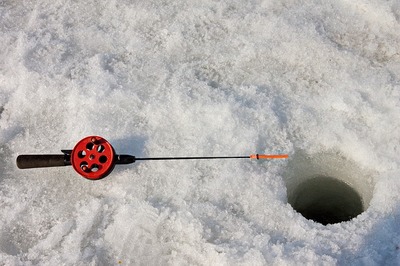
For example, you’ll need a very short rod to fish effectively through a small hole, and you’ll also need an ice auger to cut the hole in the first place. Despite these differences, ice fishing requires the same types of line, lures and tackle that you would use for conventional, freshwater fishing.
Kayak and Float Fishing

We reviewed 7 best fishing kayaks to find the one for every different situation.
However, this increased access comes at a price: You’ll have to scale-down the amount of equipment you bring as space will be at a premium. Obviously, you’ll also need all of the equipment necessary to pilot your craft, including paddles and flippers. You may also want to mount a fish finder on your kayak.
Cane Pole Fishing
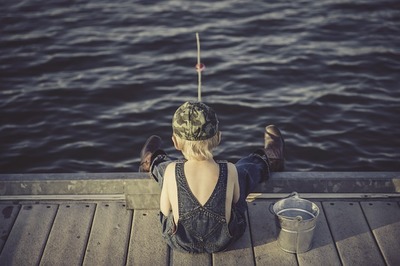
You’ll need little more than a cane pole, a length of 10-pound-test line, a few #6 hooks and a can full of worms, corn or crickets.
——–
While this section provided an introduction to the most popular fishing types, your best bet to learn a new style of fishing would still be through personal instruction, for which you may want to consider hiring a fishing guide.
In addition to providing professional teaching and advice, a guide will help you catch the fish you’d like to target by taking you to their best spots on the water, sometimes private or otherwise inaccessible. Search for guides near you or in a destination you plan to visit on Fisher Guiding.
Recommended reading: Why Do Fishermen Fish Early In The Morning?
Minimal Gear: What Do You Need to Go Fishing Tomorrow?
Part of the beauty of fishing is that virtually anyone can do it. You don’t need to dedicate your life to learning the techniques (although you may do so voluntarily) – you simply need to grab a minimal amount of gear and hit the water.
Unfortunately, many novices are overwhelmed by the sheer volume of equipment, rods, tools and tackle stocked by most retailers.
Seasoned anglers are fond of saying that you cannot have too much tackle, but if you’re just interested in doing a bit of casual fishing, be sure to bring the following equipment:
Rod: You’ll need the right type of rod for the situation and your target species. A 6- to 7-foot-long, medium-power, fast-action spinning rod will work for most freshwater applications. Saltwater anglers often prefer much longer, stouter rods, measuring about 9 feet in length. Get advice on choosing the best fishing rod here.
Reel: Spinning reels are strongly preferred for beginners, as bait-casting reels require some technique to use. You don’t have to worry about gear ratios or other nuanced characteristics to go spend a couple of hours fishing, so just concentrate of using a reel appropriately sized for your target species. Some new anglers also like to use spin-cast reels.
Line: There are a number of high-performance fishing lines on the market, but for a relaxing day of fishing, monofilament line – the most economical choice — will suffice. Use a fishing line rated for about eight times the weight of the fish you intend to catch. For example, if you hope to catch a bunch of half-pound bluegill, you’ll want 4-pound-test line.
Lures: Artificial lures are easier and simpler to use than live bait for most beginners, but live baits tend to catch more fish for beginners. In reality, you’ll probably want to be prepared to fish in both manners.
Bring five or six different jigs, spoons or crankbaits (depending on the species you are targeting), but also bring a few hooks, floats and weights, so you can fish with live bait too.
Basic Tools: Seasoned anglers often devise methods for rigging and repairing equipment with whatever is on hand, but new anglers will have a much better time if they bring along a few simple tools.
Minimally, this should include a pair of cutting pliers or scissors and a pair of needle-nose pliers. A good multi-tool – especially a model designed specifically for anglers – is often a good choice.
Tackle Box: You’ll need something to carry all of this equipment. By convention, anglers typically refer to such an item as a tackle box, but modern tackle boxes are often better described as tackle bags or tackle back packs.
Nevertheless, you do not need anything fancy if you are only going fishing for a day – a backpack or old tool box will work.
Miscellaneous: A variety of other items will help improve your experience, although they do not fall into the“necessary“ category.
For example, fish finders (electronic sonar devices that scan below your boat) can help you find where the fish are holding, but some beginners may find them difficult to use or overwhelming. If you decide to use them, make sure to check out our advice for finding the best fish finder.
Polarized fishing sunglasses are another good item to bring, as they will help you see below the water’s surface to locate fish and see how your lure is behaving.
Commercial fishermen, or even some serious recreational anglers who spend a lot of time on a fishing boat, may invest in some waterproof fishing bibs as well.
Common Rigs for Different Freshwater Species
Your target species is one of the most important things to consider while shopping for fishing equipment. You’ll have a hard time catching rainbow trout with gear designed for catching largemouth bass, for example, so be sure to use a rig suitable for your quarry.
Related: The Most Ethical Fish to Catch Recreationally (Best Practices)
Black Bass
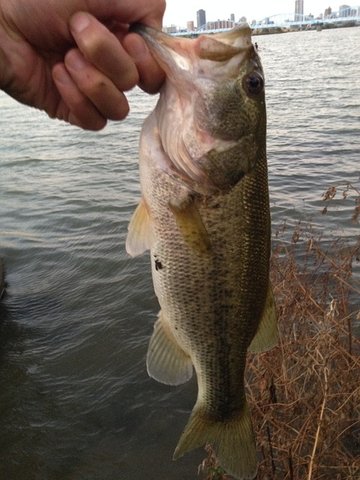
Great place to learn more about bass preferences, habitats and feeding times is Bass Resource.
Rod – Lightweight spinning rods are ideal for beginners and those using finesse-oriented presentations, but advanced anglers often prefer using medium-weight casting rods. Different lures work best with different rod lengths, but most anglers use rods with lengths of 6 to 7 ½ feet.
Reel – Match your reel to your rod, but the same principle applies: Spinning reels are better for beginners and those using light lures and lines, while baitcasting reels provide a few unique advantages for experienced fishermen and fisherwomen.
Line – Monofilament line will work, but fluorocarbon line is better for fishing in very clear water and braided lines are better when fishing through very heavy cover.
You’ll have to match your line-strength to the type of lure you are using; small lures typically require 6- to 8-pound-test fluorocarbon or monofilament line, while larger lures require 10- to 25-pound-test line.
Braided lines are rated at about twice the testing strenght of comparably thick fluorocarbon or monofilament, so adjust your selection accordingly.
Lures – Jigs, spinnerbaits, crankbaits and topwater plugs are all effective for catching bass, but the historical grand champion is the humble plastic worm. Be sure to bring lures in an assortment of colors and sizes.
Crappie
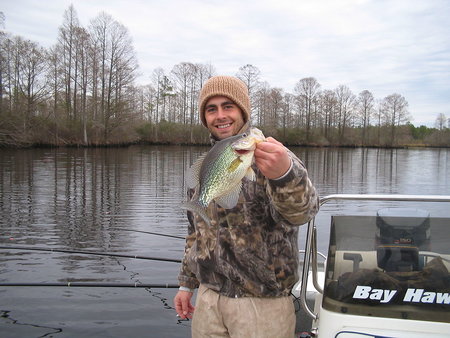
Rod – Use a 6- to 8-foot-long, light-power, medium-fast-action spinning rod. By using a rod with a slower action, you’ll be less likely to pull the hook out of a crappie’s mouth.
Reel – Use a lightweight spinning reel with plenty of line capacity. A reel with a high-speed gear ratio will help get the fish in the boat a little more quickly.
Line – 4- to 6-pound-test monofilament line will work, but fluorocarbon line will be more efficient if you are fishing in very clear or deep water.
Lures – Crappie feed almost exclusively on minnows and small fish, so anglers typically target them with live minnows or small lures that mimic small fish. Curly-tailed grubs threaded onto small jig heads work well, as do little tube baits rigged in the same fashion.
See more crappie fishing tips…
Walleye

Rod – You can catch walleyes with either spinning gear or casting gear, but beginners should stick to spinning gear for simplicity’s sake. Walleye fishing often involves long casts, so opt for a medium-power rod that is at least 7 feet long.
Reel – Unless you are an experienced angler, use a spinning reel to catch walleye. A high capacity spool is warranted for catching these fish, particularly if you plan to do so while trolling.
Line – Because walleye are not blessed with great eyesight, you don’t need to use low-visibility, fluorocarbon lines. However, fluorocarbon lines stretch less than monofilament lines do, which makes it better suited for achieving solid hook sets at a great distance.
Lures – Jigs and small spinning baits are the best lures for targeting walleyes. Often, you can improve your odds of catching them by attaching a minnow or worm to the back of an artificial lure.
Catfish

Also check out our catfish rod buyer guide.
Rod – You want to use a long, medium-power spinning rod to help you cast as far as possible and handle the occasional big catfish you may hook. Something at least 7-feet-long would be ideal. You can use whatever rod action you like, but slower actions will help you to fight larger fish.
Reel – Catfishing often requires long casts in deep water, so you’ll need a reel that can hold a lot of lines. A fast retrieve speed is not terribly important for catfishing.
Line – Catfish are not typically very timid, so you don’t have to use a very light line to catch them. Additionally, because you’ll want to be prepared for the occasional big fish, it makes sense to use a 10- to 12-pound-test line.
Monofilament or fluorocarbon lines will work well, but braided lines are a better choice if you are fishing near rocks, sticks or other forms of cover.
Lures – Catfish can be caught on a variety of lures, but live baits are more effective for catching these scent-oriented fish. Worms, crickets or fish work well, but unusual things like dough balls, hot dogs, and grapes are also capable at times.
Trout
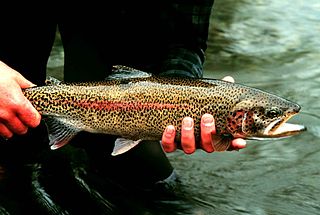
Rod – Use a 5- to 6 ½-foot-long spinning rod to help you maneuver around stream-side trees. A light- to medium-power rod will suffice, with a fast- to extra-fast-action tip to help generate quick, solid hook sets.
Reel – Any lightweight spinning reel will work for catching trout, although those with a fast retrieve will help you reel in line quickly if the trout swims right at you, as they are often inclined to do.
Line – You’ll need a very light-weight, low-visibility line to catch trout consistently. Four-pound-test fluorocarbon is ideal for most situations, although some anglers prefer 6-pound-test lines.
Lures – You can catch trout on a variety of lures and baits, including small inline spinnerbaits, spoons, jigs, crickets, worms and trout eggs. However, many trout streams have tackle restrictions, so be sure to follow all relevant regulations when purchasing lures.
Bluegill
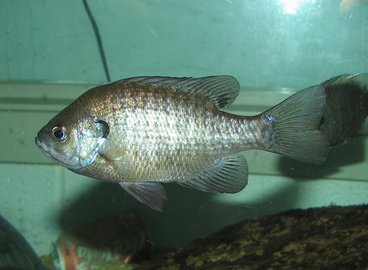
Rod – A 6- to 8-foot-long spinning rod is ideal, but children are best served by smaller, 4- to 5-foot-long rods. Light power rods with fast action are the best choice, but virtually any spinning rod will work.
Reel – You’ll want to use a reliable spinning reel when targeting bluegill, as you’ll probably be reeling in fish all day long. Most bluegill fishing occurs at close range, so reels with high-capacity spools are unnecessary.
Line – Bluegill aren’t very line-shy, and you could probably tie your hook to a shoelace and still catch a couple of them. Accordingly, it makes sense to go with a 4- to 8-pound-test, monofilament line (fluorocarbon will work well too if you don’t mind the additional expense).
Lures – Notoriously opportunistic eaters, bluegill have probably been caught with every lure and bait in existence. Live baits, including worms or crickets, are quite useful, as are bread-based-baits and small jigs.
A voracious bluegill will even bite an un-baited hook from time to time. Use tiny hooks when targeting bluegill to improve your odds of getting a good hook set.

